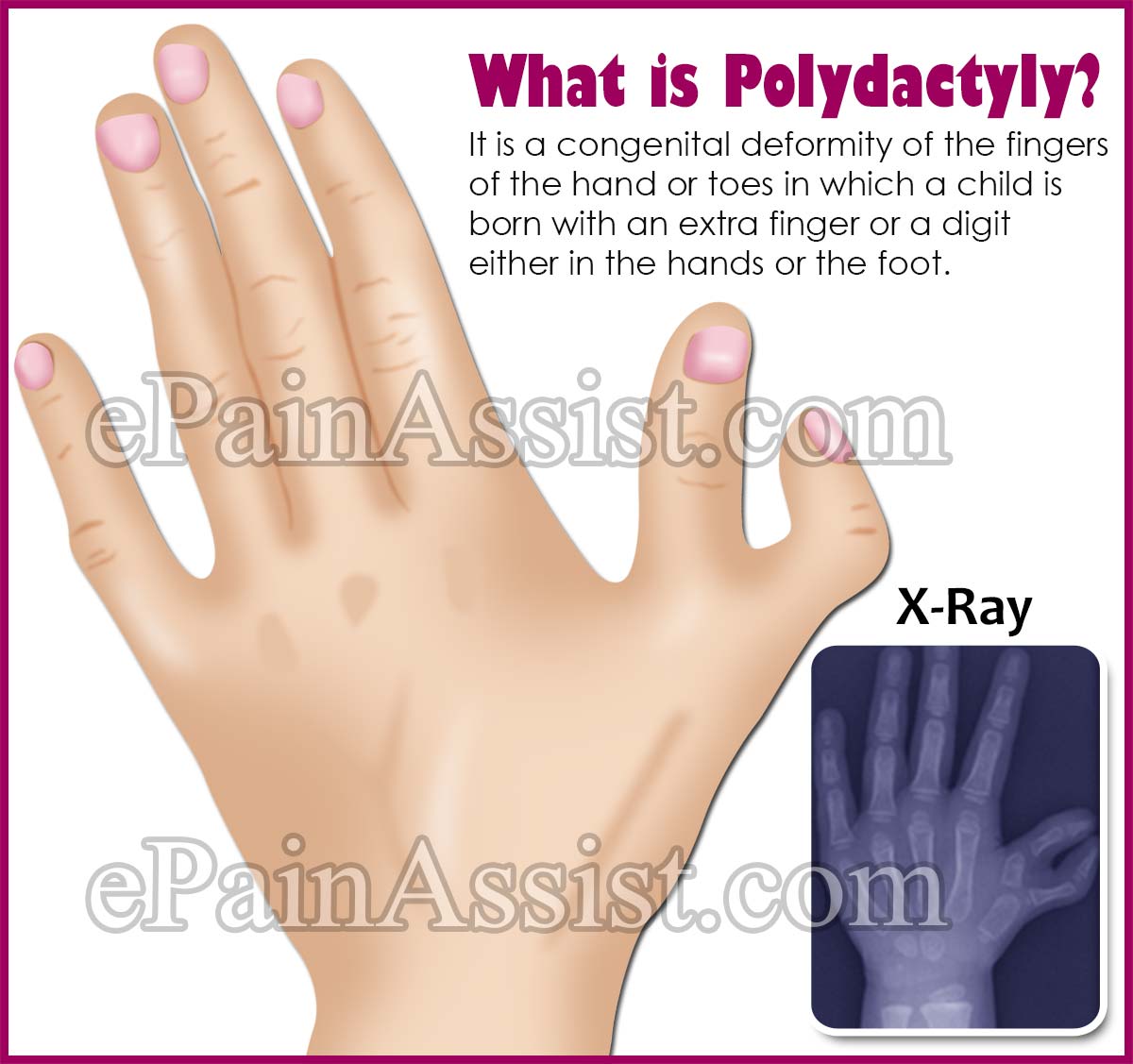What is Polydactyly?
Polydactyly is a congenital deformity of the fingers of the hand or toes in which a child is born with an extra finger or a digit either in the hands or the foot.1 There may just be one or more extra finger present in the hand or foot. When speaking of the hands Polydactyly or the extra finger is most commonly present adjacent to the small finger. It may also be present along with the thumb. Rarely, it is present in the middle of the hand. In the foot, it is normally present with the thumb. The extra finger present in Polydactyly is usually underdeveloped and the severity of the condition depends on what this extra finger or fingers are made up of. The most common and easiest one to treat is the finger which is made up of just skin and flaps of tissue. In the more moderate forms, the extra finger is made up of skin, soft tissue as well as bone but there are no joints present in that finger. These types of fingers in polydactyly require more complex forms of treatment. In the severest type, there is skin, tissue, bone as well as joint present in the extra finger and this poses the maximum challenge for physicians to remove and treat. Polydactyly is quite common and occurs in around 10-15% of babies born. In majority of the cases, only one hand or foot is affected by this condition.

What is the Cause of Polydactyly?
The formation of hands normally starts at the second or third week of pregnancy. By the seventh week of pregnancy, the fingers start to form. Polydactyly normally occurs as a result of any irregularity in the process of development of the hands and fingers and as a result a single finger splits into two parts resulting in formation of an extra digit. Apart from this, there is no other cause identified for Polydactyly as of now. This condition is most common in African American babies.
What are the Symptoms of Polydactyly?
Polydactyly is a visible deformity that is present in a child at birth. If it occurs in the presence of some other genetic condition then the baby may experience symptoms of that condition. Polydactyly in itself does not cause any pain or discomfort for the child apart from cosmetic displeasure for the parents.
How is Polydactyly Diagnosed?
Prenatally meaning that before the child is born, Polydactyly can be seen on ultrasound and presents as a visible deformity at birth.2 The treatment course will be formulated by the physician after taking a look at the internal structure of the extra finger which will be done by performing radiological studies in the form of x-rays or MRI scan. Once the internal structure of the extra finger is studied and it is known whether that finger is just made up of skin and tissue and whether there are bones or joints in the finger a treatment plan will be formulated.
How is Polydactyly Treated?
Surgery is the mode of treatment for treating Polydactyly.3 If the extra finger is just made up of tissue and skin then it can be easily excised. The procedure is done when the child is about two years of age. This procedure is relatively minor and does not result in any particular complications. If the extra finger is at the thumb then the situation becomes a bit more complex as the procedure may negatively impact the functioning of the thumb and its shape and position. The procedure is a bit complicated as the surgeon needs to make sure that while removing the extra thumb the tissues of the normal thumb are not injured. The surgeon in some cases may also have to remodel the thumb into proper position and shape. Despite this, the normal thumb may still look disfigured to an extent. The most complex procedure is removing the extra finger in the center of the hand as it involves restructuring and reconstruction of the hand making sure that none of the joints, tissues, or tendons is injured during the procedure. In such cases, usually more than one surgery is required. Once the extra finger is successfully removed then further corrective surgeries can be done to improve the cosmetic appearance of the affected region.
What is the Prognosis of Polydactyly?
In majority of the cases, the baby regains full function and almost a normal looking appearance of the hand or feet and there are minimal complications with surgery done for Polydactyly. Once fully recovered from surgery, the child may need to be observed for a few months to check on the healing process, the function of the affected region, look at the cosmetic appearance of the area, and to see if further surgical procedures are warranted in case if desires result is not attained after surgery for Polydactyly.
